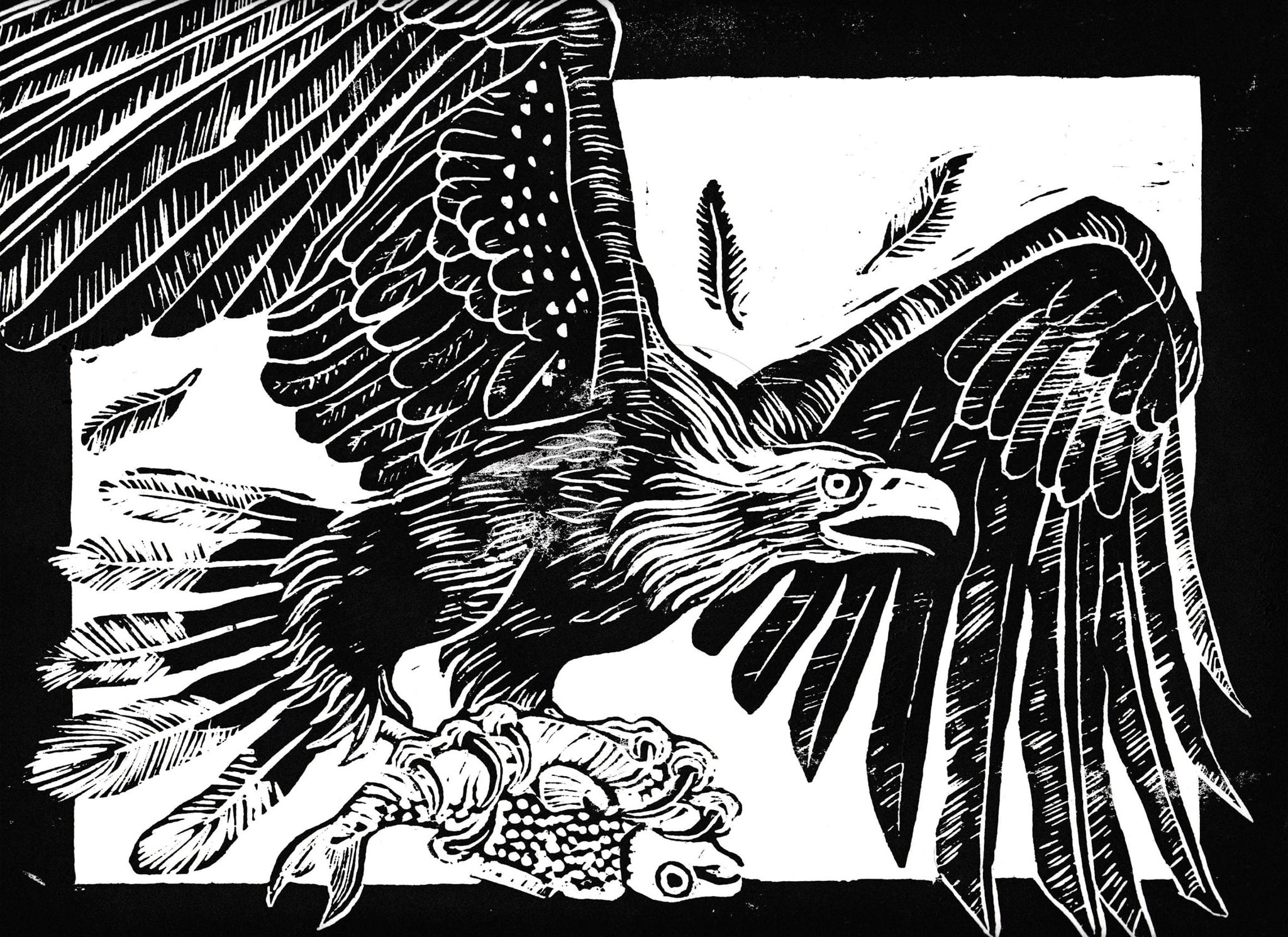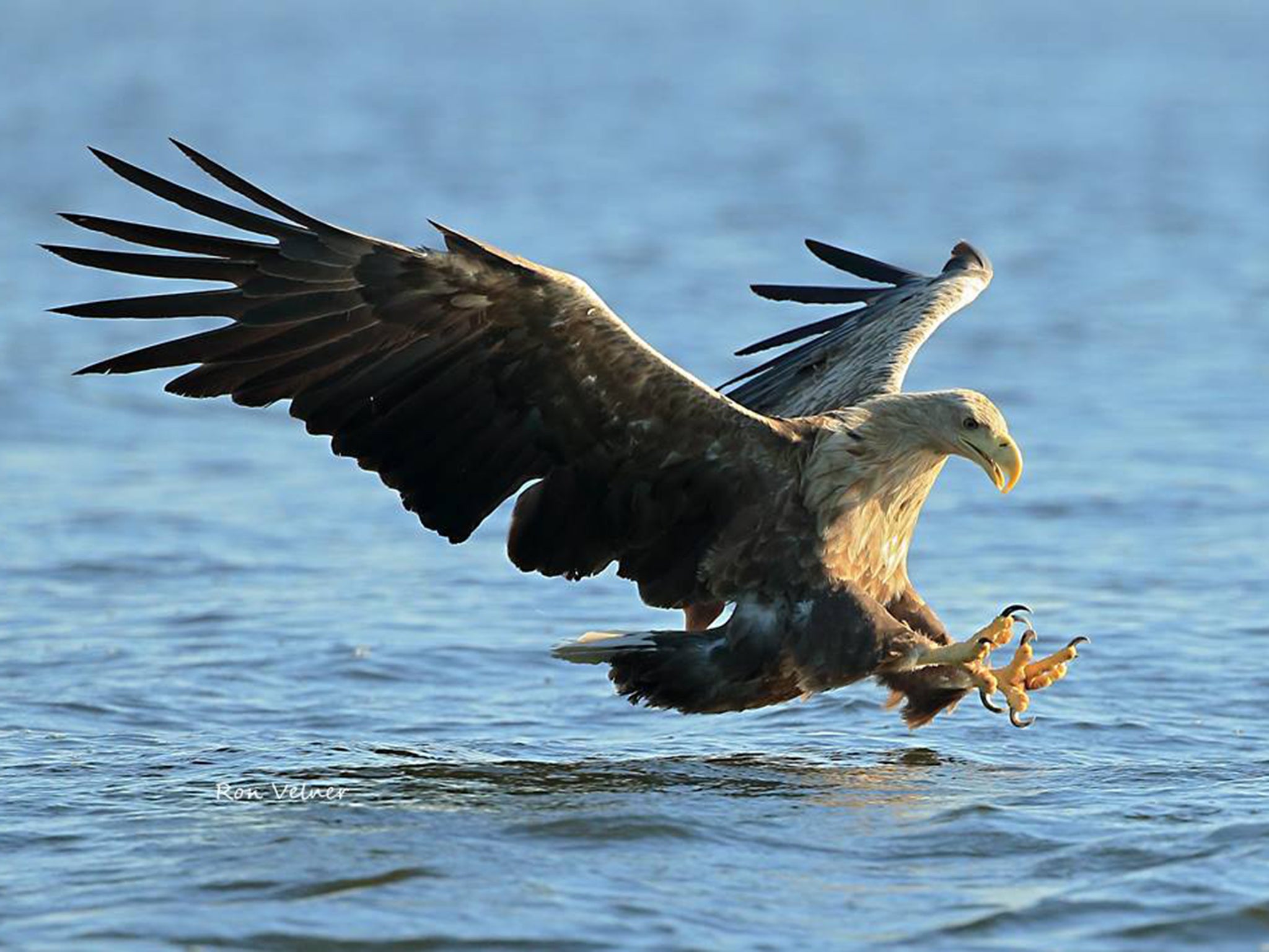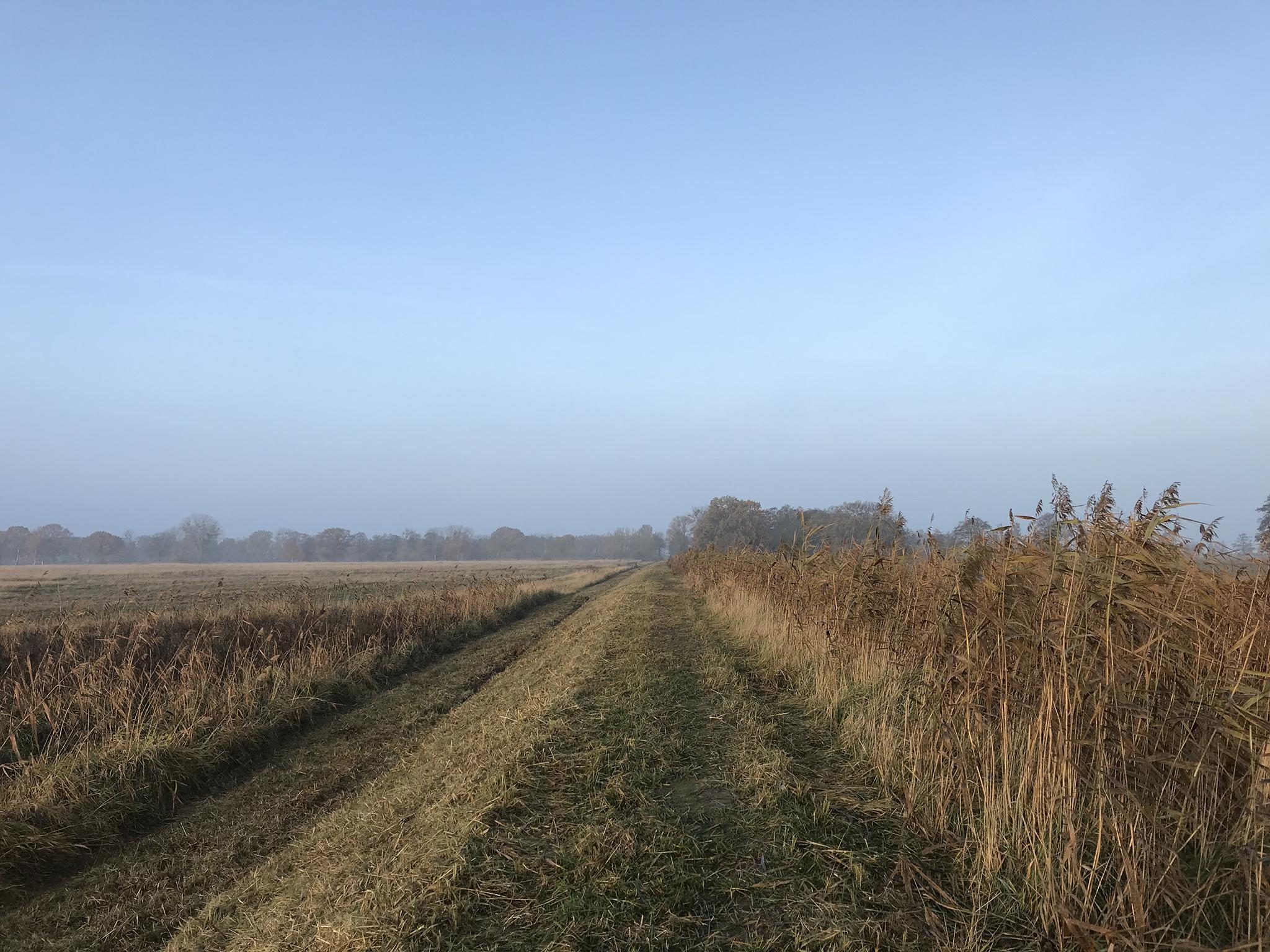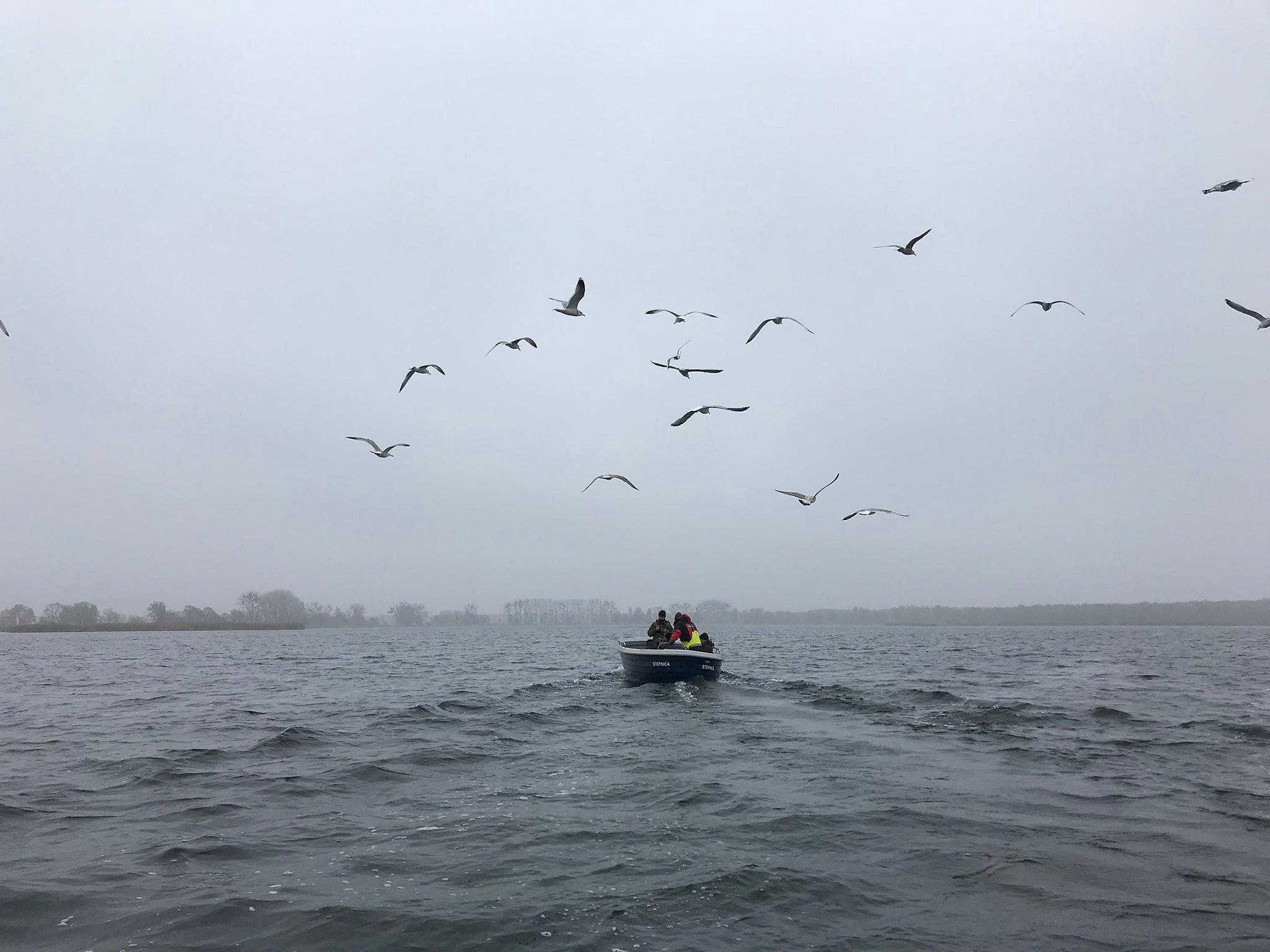No flight of fancy: How the white-tailed eagle may soon be soaring again over southern England
These magnificent birds of prey became extinct in England 240 years ago, but, as Phoebe Weston explains, having been reintroduced to Scotland their next home may be on the Isle of Wight


The Polish border with Germany might not seem like an obvious place for a holiday. However, this old buffer zone between the Soviet Union and the west is home to some of Europe’s most wild and untouched landscapes. I came here to see white-tailed eagles ahead of plans to reintroduce them on the Isle of Wight next year, more than 230 years after they were last seen there.
The Oder Delta, sometimes referred to as the “Amazon of the north”, sits on the Baltic coast in both Germany and Poland. Largely devoid of human habitation, this fought-over land has been left as a haven for lynx, European bison and wolves. In the Szczecin lagoon on the Polish side (which was part of Germany for 123 years) there are 50 breeding pairs of white-tailed eagles patrolling an area of 100 square kilometres. With an astonishing six-foot wingspan, these raptors are Europe’s largest eagle. There is a higher density of them here than anywhere else in the world.
I am here with my brother as part of a tour organised by the newly formed – and rather makeshift – Oder Delta Safaris company. It is based in a village called Kopice, 20 miles north of the regional capital of Szczecin and three hours drive from Berlin. The firm is run from the living room of a couple called Iwona Krepic and Reginald Sciezka, who live at the end of the village. The day before we arrive a deer is taken down by wolves just metres from their front door.
Kopice is largely populated by ex-Soviet farmers with a preservationist ethic and resistance to change. This primordial landscape is also one of the poorest and most undeveloped regions in the EU. After the breakdown of the USSR in 1991, the abandonment of agricultural lands dramatically benefited the population of white-tailed eagles.
To see these incredible birds hunting we head out in a small fishing boat on Szczecin lagoon, with a weathered Polish fisherman who does not speak a word of English. Known as “the eagle with the sunlit eye” in Gaelic, the white-tailed is even bigger than the golden eagle and has a beak that resembles a meat cleaver. The white-tailed eagle is also inquisitive – perhaps one reason it was so easily persecuted by our ancestors. However, this does mean that they are brazen enough to swoop down for fish just 20 metres from a boat full of people – also making them the perfect tourist attraction.
Kite-flying
Conservation efforts have given the red kite a new lease of life
The successful reintroduction of the red kite has shown how a bird species almost lost to Britain can once again come to dominate its skies.
Persecution – and the popularity of egg collection – led to such a decline in red kite populations during the 19th and early 20th centuries that the birds had become confined solely to an area of central Wales. With numbers falling globally, re-establishing the species in the UK became a priority during the 1980s.
In 1989, five birds were released in the Chilterns, with 88 more following over the next five years. A similar number were released at a site in northern Scotland. Today there are well over 1,000 breeding pairs in Oxfordshire, Buckinghamshire, Hertfordshire and Berkshire alone. Populations in Wales have thrived and breeding colonies are established in four Scottish locations.
With a wing span of 1.8m, red kites glide majestically on the thermals that rise in hilly areas, turning with surprising agility when harangued by other birds – particularly crows. Easily distinguished by their colouring and forked tail, kites have the rare ability to make buzzards seem small.
However, they are no match for eagles – the golden variety can have a wingspan of up to 2.2m, while the white-tailed eagle is bigger still. Should the latter’s reintroduction in England be successful, the red kite will no longer have the bragging rights it does now.
There is an art to luring white-tailed eagles. Fishermen encourage clouds of seagulls by lobbing fish out of the boat every few minutes. This causes the curious raptors to circle above. Then, to encourage them to dive down, the fishermen throw out a dead fish pumped full of air so it floats. This fish has to be too big for gulls to swallow. When the eagle starts to drop, the gathering of gulls immediately scatters, giving it a clear runway. The raptor accelerates as it flings its bright yellow talons into the water. We saw around 10 drop down to make catches, with four successfully picking up fish. One photographer said you can see as many as 50 dives in three hours when the weather is good.
Such spectacular sights have not been witnessed along the southern coast of England since 1780. The Old English name for eagle is “earn” or “erne” (which translates as soarer). From Arncliffe (eagle cliff) in North Yorkshire and Earnley (eagle clearing) in Sussex to Arbury Banks (eagle fort banks) in Hertfordshire, evidence of their existence is written into place names all over the country. These areas are often near woodland and river valleys. This suggests “earn” refers to white-tailed eagles (also known as sea eagles), which feed extensively on freshwater and marine fish as opposed to golden eagles, which are mountain-based. As many as 68 towns and villages across lowland Britain are named after white-tailed eagles.
Records suggest white-tailed eagles were in the UK for 15,000 years at least before they became extinct at the start of the 20th century. In Orkney, during the Neolithic period, they were a totemic symbol and have been found buried alongside the dead. It is believed their numbers started to decline after the Roman period, which was marked by an increase in drainage, woodland clearance and the start of their persecution. They were killed by shepherds, fishermen and farmers keen to protect their stock – and later by Victorian “enthusiasts” looking to boost their taxidermy collections. The Scottish population held on until 1918, when the last bird was believed to have been shot on the Shetland islands.

The Roy Dennis Wildlife Foundation and the Forestry Commission are now looking to reintroduce England’s first white-tailed eagles onto Culver Cliff on the Isle of Wight by June next year. Over a five-year period they want to reintroduce 50 breeding pairs. This follows a successful reintroduction programme in Scotland which began in the 1960s.
Roy Dennis, ornithologist and consultant, says: “Like me, many people would be lifted to see a white-tailed eagle soaring over The Needles. Especially at a time when nature is generally being hammered. The clear reason they’re not here is because of persecution. They could easily come back.”
This ambitious project is part of the rewilding movement which seeks to reinstate apex predators or large grazers to places where they used to live. The process is controversial because of its inherent unpredictability. Reintroducing Europe’s largest predatory bird to a densely populated area, where people have no memory of living alongside them, has naturally raised a number of concerns.
Farmers are particularly worried their livestock will be hunted. The NFU’s (National Farmers Union) senior countryside adviser Claire Robinson said: “Any species reintroduction, particularly if it hasn’t been in the area for many years, can have a significant impact on the many benefits that the countryside delivers. In the case of sea eagles they are known to prey on livestock, particularly live lambs.”
There is certainly some reason to be concerned, as white-tailed eagles are successful hunters and are found as far west as Greenland and as far east as Japan.
Having been on the brink of extinction, the 1920s marked a period of recovery thanks to the introduction of legislation in various European nations that made it illegal to persecute the birds. However, this positive trend was reversed from the mid-1950s to the early 1980s with the rapid industrialisation of farming and widespread use of chemicals after the Second World War. The principal culprit was DDT, a synthetic organic compound used as an insecticide. DDT had a devastating effect on the eggshells of apex predators, including peregrine falcons, bald eagles, and ospreys. It thinned the shells so much that the weight of the incubating bird cracked them – instead of having chicks, birds were left with omelettes in their nests. It was not until the 1970s that DDT was finally banned.
Their bounce back since then has been remarkable. In Poland in the 1950s there were just 50 breeding pairs, yet by the early 2000s there were more than 1,400 pairs. Large increases have been seen in other Baltic countries such as Denmark, Estonia, Finland, Latvia, Lithuania, Russia and Sweden. The white-tailed eagle is considered a “flagship species” for nature conservation and one of the few European raptors whose population is actually growing.

Britain’s countryside – which is one of the most nature-depleted in the world – is a far cry from the 250,000-hectare wilderness of the Oder. Since the 1960s, conservationists have been trying to get the eagles to breed in Scotland, their last foothold in the UK before their earlier extinction. Dennis was involved in rearing and releasing four young Norwegian white-tailed eagles on Scotland’s Fair Isle in 1968. Although the chicks were successfully reared they did not breed. White-tailed eagles are difficult to reintroduce because they don’t breed until they are five or six years old. They also form monogamous, lifelong pairings, rearing just one or two chicks each year and don’t travel far from where they were raised.
It was not until 1985 that the first successful breeding occurred on Mull. Earlier this year, a chick hatched in Orkney for the first time in 145 years. Scotland is now believed to be home to more than 130 breeding pairs with eagle tourism generating £5m for the economy of the Isle of Mull and £2.4m for the Isle of Skye.

However, farmers in these areas have complained that sea eagle predation is making sheep farming “impossible”. Reports suggest that the eagles not only take lambs but can kill a sheep of up to 60kg. According to the NFU, lamb losses can be as high as 20 per cent. “On the Isle of Wight where reintroduction has been proposed, local farmers have not been given any reassurances of how livestock predation would be handled, or any losses compensated for,” says Ms Robinson.
Dennis was sceptical about the impact of eagles on farmers.
“There has been a lot of controversy about them taking in lambs. Sheep are raised in hard conditions up north and the weather is miserable. In the Isle of Wight, sheep are much larger. They are mainly raised in sight of the farmhouse, and the ground is rich and the grass is good. There will also be plenty of other food for the eagles to eat,” he says.

When eagles were reintroduced to Ireland 10 years ago farmers were initially very worried but are now generally supportive of the project. Dutch researchers say there have been no conflicts with farming interests or impacts on other species in the Netherlands where eagles live in close proximity to farms.
Dennis believes there should be plentiful supplies of nutrition in the coastal waters of southern Britain, where there are 170,000 water birds, gulls and wading birds.
“White-tailed eagles are generalist feeders and will rather eat something that’s dead than catch something alive. If there are 170,000 birds some are always going to be dying. They would also learn to pick up discarded crustaceans from fishermen,” he says.
Experts say bringing the birds into the Isle of Wight should be easier than the initial reintroduction into Scotland.
“From a health point of view I can’t see any major risks in bringing them in. As far as I’m aware it would be a good way to increase the biodiversity of bird populations so I’m in favour of it,” says Tony Sainsbury, Zoological Society of London’s senior lecturer in wild animal health, who carried out a disease risk analysis for a proposed white-tailed introduction into Suffolk 10 years ago. He says the eagles posed little threat to endangered species and dismissed the risk of them hunting red squirrels as “really implausible”.
The Hampshire and Isle of Wight Wildlife Trust is tentatively supporting the reintroduction, saying it recognises the “real benefits that such an iconic bird could bring to local communities”.
In November there were public drop-in sessions at three locations across the Isle of Wight to hear people’s concerns and encourage locals to support the project. Dennis says the Forestry Commission would like to implement the project as part of their 100-year anniversary in 2019.
The reintroduction joins a host of rewilding projects gathering pace in the UK, including plans to bring back wolves, bears and beavers. A long-fought bid to introduce lynx into Northumberland was rejected by the government just a month ago with a revised application due to be submitted next year. If these trends continue, within the next few decades we could potentially live alongside predators that have not been here for many hundreds of years.
Join our commenting forum
Join thought-provoking conversations, follow other Independent readers and see their replies
Comments